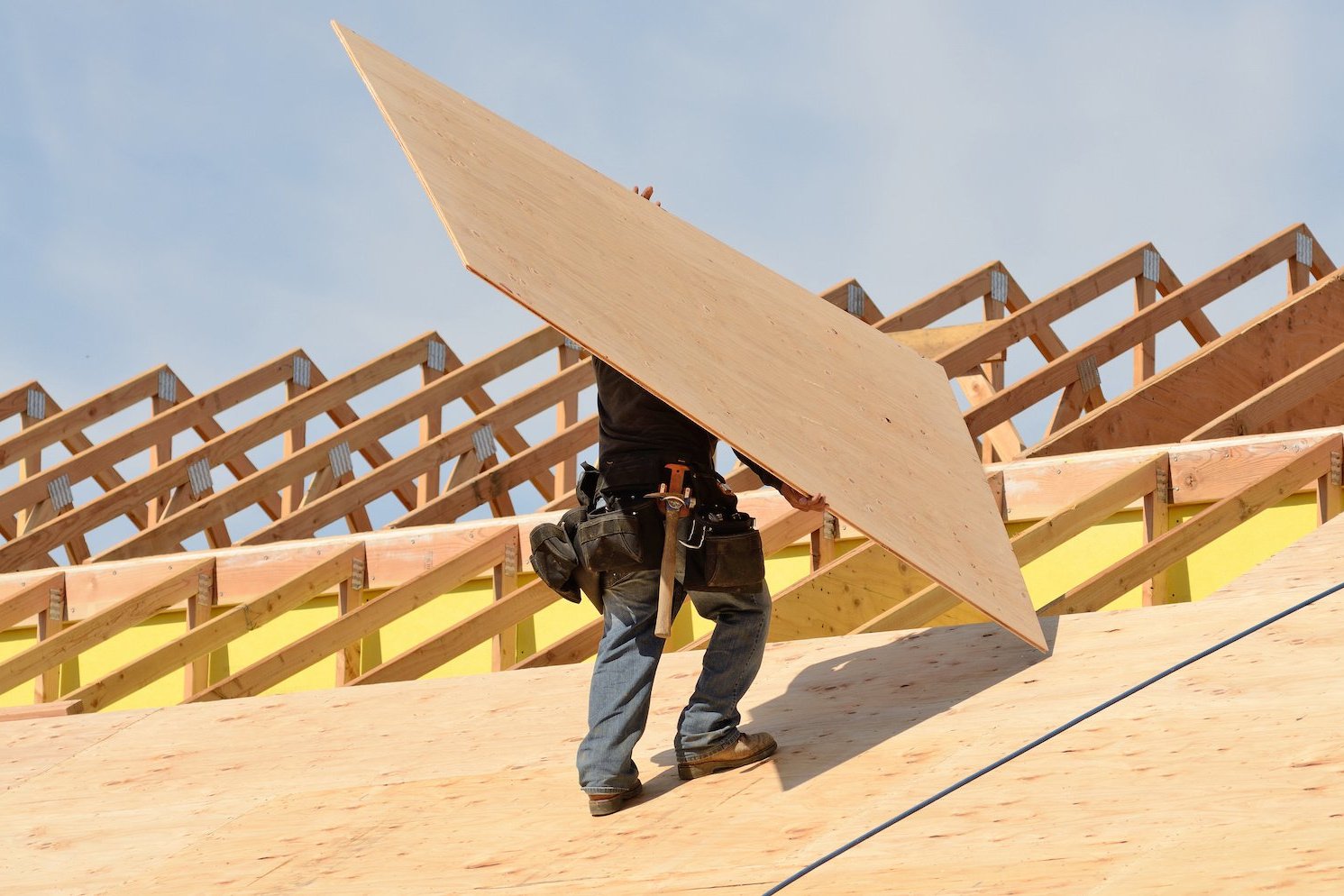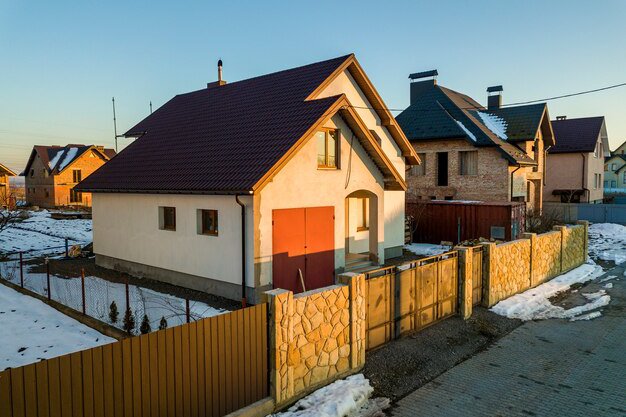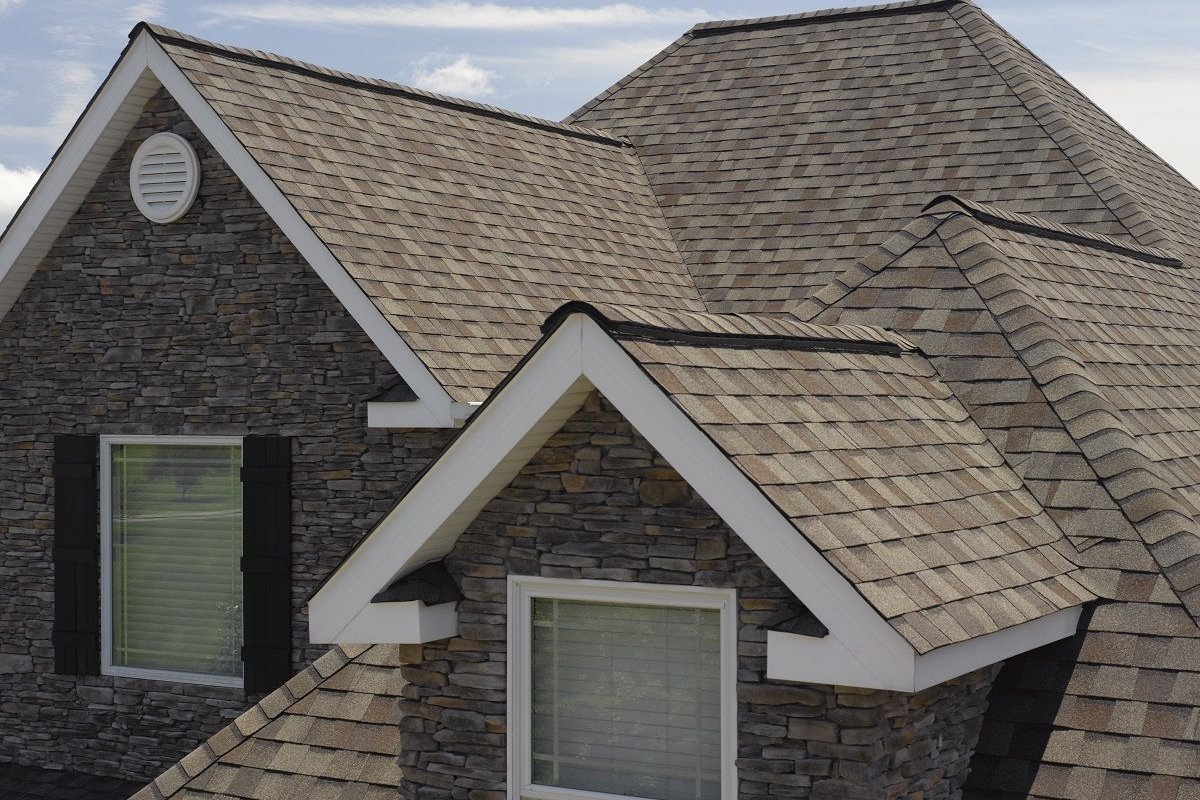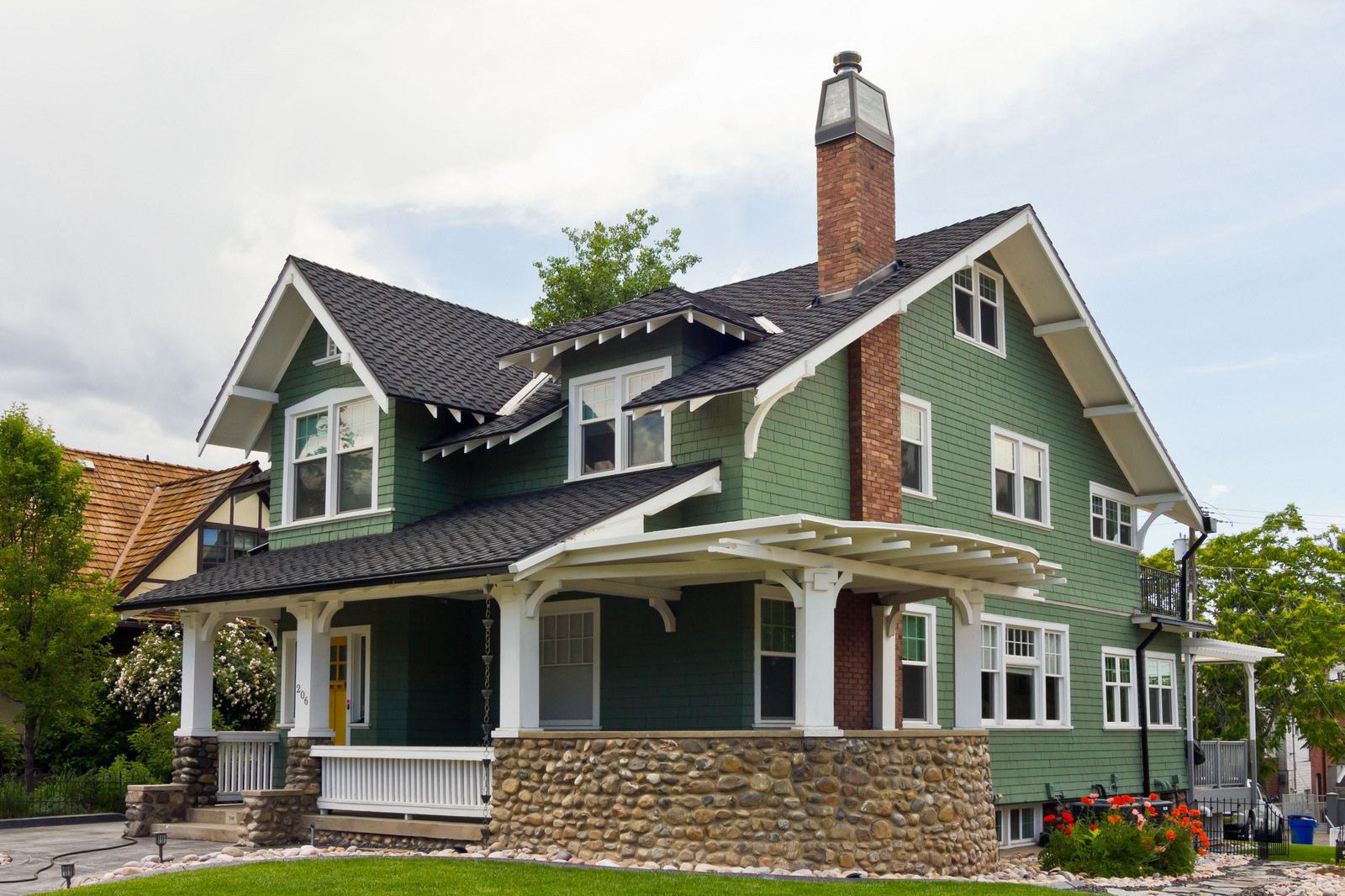Shingle Granule Loss in Portland, Oregon: Causes, Signs, and Solutions
For homeowners in Portland, Oregon, understanding the condition of their roof is paramount to protecting their property. One common sign of an aging or damaged asphalt shingle roof is granule loss. These seemingly small granules play a critical role in your roof's performance and longevity. When they start to disappear, it's a clear signal that your roof's protective capabilities are diminishing, potentially leading to more significant issues down the line. Recognizing the signs early can save you considerable time, money, and stress by allowing you to address the problem before it escalates into leaks or structural damage. This guide will walk you through what shingle granules are, why they fall off, how to identify the problem, and what actions you should consider taking to safeguard your investment.
Understanding Shingle Granules: The Roof's Protective Shield
Asphalt shingles, the most common roofing material in North America, are composed of several layers. The outermost layer is covered with small, ceramic-coated granules. These granules are not merely for aesthetics, although they do provide the color and texture of the shingle. Their primary functions are vital to the roof's performance and durability.
Firstly, granules act as a crucial barrier against the sun's ultraviolet (UV) rays. UV radiation is highly damaging to asphalt, causing it to dry out, become brittle, and deteriorate rapidly. The granules reflect much of this radiation, significantly slowing down the aging process of the asphalt layer beneath.
Secondly, granules contribute to the shingle's fire resistance. The ceramic coating helps shingles achieve fire ratings, providing an important layer of protection against airborne embers.
Thirdly, they add weight and texture, helping the shingles interlock and resist wind uplift. They also help channel water efficiently off the roof surface. Over time, these granules naturally erode or become dislodged due to various environmental factors and physical forces.
Common Causes of Granule Loss
Granule loss is a natural part of a shingle roof's life cycle, but excessive or premature loss indicates a problem. Several factors contribute to granules detaching from the asphalt base.
Natural Aging and Wear
As asphalt shingles age, the asphalt binder that holds the granules in place begins to dry out and lose its elasticity. This natural process, accelerated by exposure to the elements, weakens the bond, causing granules to loosen and fall off. The rate of aging depends on the quality of the shingle, the climate, and the roof's exposure.
Weather Exposure
The weather in places like the Pacific Northwest can be particularly harsh on roofing materials.
- Sunlight (UV Rays): Even with granule protection, persistent UV exposure degrades the asphalt binder over time.
- Rain: Heavy rainfall can wash away loosened granules.
- Wind: High winds can lift shingle edges, causing flexing that loosens granules, or can directly abrade the surface, especially if carrying debris.
- Hail: Hail impact is a significant cause of granule loss, often creating visible pockmarks where granules have been violently knocked off.
- Temperature Fluctuations: The expansion and contraction of roofing materials due to temperature changes can stress the shingles and weaken the granule bond.
Moss and Algae Growth
Moss and algae thrive in damp, shaded conditions common in Portland. Moss, in particular, can grow under and between shingles, holding moisture against the roof surface. As moss expands and contracts with moisture levels, it can lift the edges of shingles and loosen granules. Algae, often appearing as dark streaks, doesn't physically dislodge granules but indicates a damp environment that can foster moss growth and contribute to overall roof deterioration.
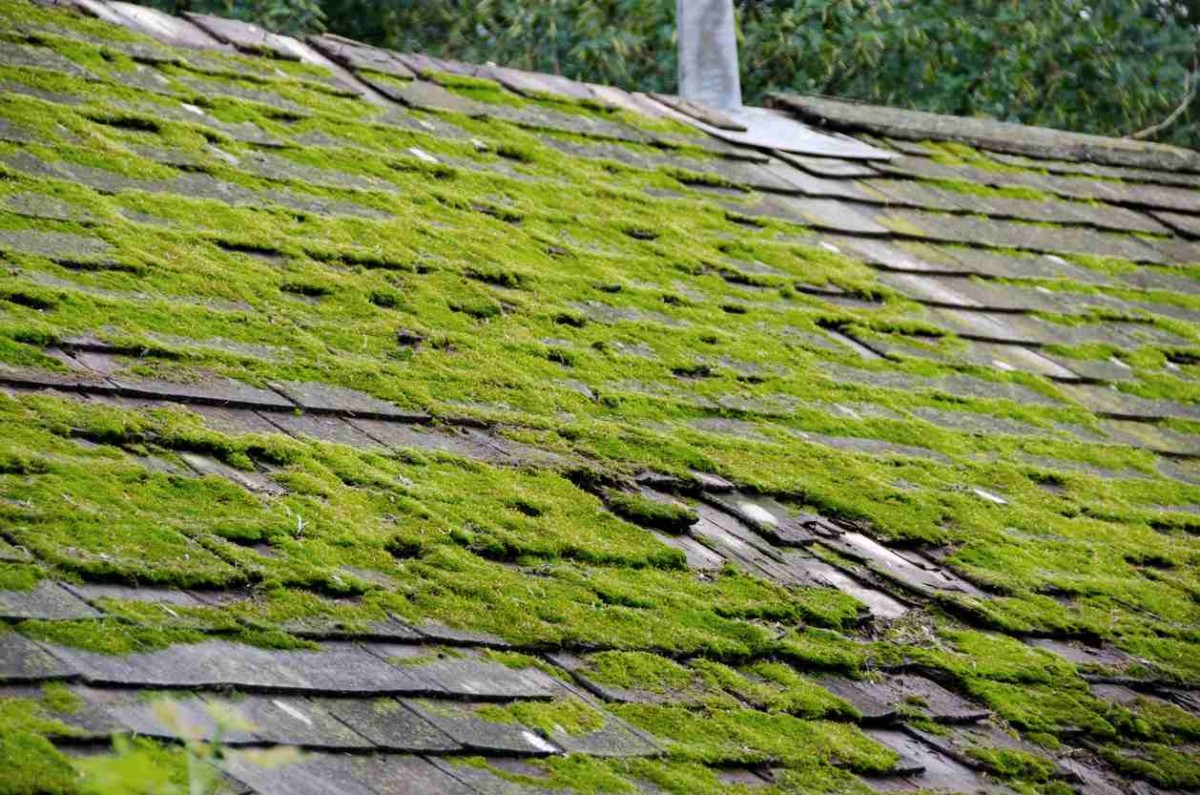
Foot Traffic
Walking on asphalt shingles, especially in hot weather when they are softer, can crush or dislodge granules. This is why limiting foot traffic on your roof is important for its longevity.
Improper Installation
While less common, issues during installation can contribute to early granule loss. This might include using insufficient or improperly placed fasteners, or installing shingles in unfavorable weather conditions.
Identifying Granule Loss: What to Look For
Spotting granule loss often requires a visual inspection, but you don't necessarily need to climb onto the roof yourself, which can be dangerous.
The most obvious sign is the accumulation of granules. Check your gutters and downspouts. These are natural collection points for granules washed off the roof by rain. A small amount of granule sediment is normal, especially on a newer roof as excess granules settle, but a significant buildup resembling coarse sand or gravel is a red flag.
Another clear sign is bare spots on the shingles. These spots will appear darker than the surrounding areas because the underlying black asphalt is exposed. Look for areas where the texture changes or where the color seems inconsistent. Valleys (where two roof sections meet) and areas around chimneys or vents are common places to check, as water flow is concentrated there.
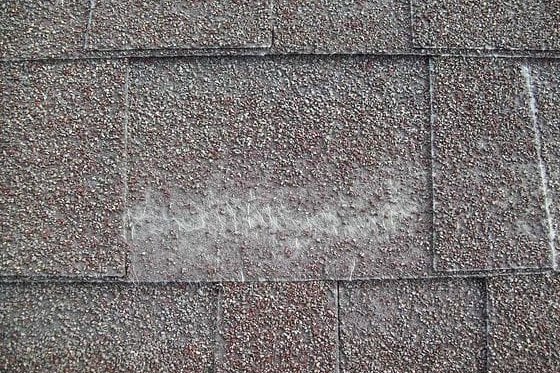
Using binoculars from the ground can be a safer way to inspect your roof surface closely, looking for these bare or discolored patches. Pay attention to areas that receive direct sunlight or are prone to holding moisture.
The Implications of Granule Loss
Ignoring significant granule loss can lead to serious and costly problems for your home. The granules aren't just cosmetic; they are functional.
Without the protective layer of granules, the asphalt layer of the shingle is directly exposed to the sun's harmful UV rays. This accelerates the rate at which the asphalt dries out and degrades, making the shingles brittle and prone to cracking and curling. This accelerated aging dramatically shortens the lifespan of your roof.
As the asphalt layer deteriorates and bare spots increase, the shingles become less effective at shedding water. Water can be absorbed into the shingle mat, leading to blistering, cracking, and eventual leaks into the underlying roof deck and attic. Water intrusion can cause rot in the roof deck, rafters, and interior damage like stained ceilings and walls, and mold growth.
Significant granule loss also reduces the roof's fire resistance rating, potentially making your home more vulnerable in case of a fire.
Furthermore, a roof with extensive granule loss looks worn and aged, detracting from your home's curb appeal and potentially affecting its value.
Assessing the Severity and Next Steps
Once you've identified signs of granule loss, the next step is to assess how severe the problem is. A small amount of granule loss, especially on older roofs or after installation, might be normal wear. However, widespread bare spots, significant granule accumulation in gutters, or granule loss on a relatively young roof are causes for concern.
Consider the age of your roof. An asphalt shingle roof typically lasts 20-25 years, though this can vary based on shingle quality, installation, and local climate. If your roof is approaching the end of its expected lifespan and shows significant granule loss, it's likely a sign of natural deterioration. If your roof is much younger (ealthan 15 years old), premature granule loss could indicate installation issues, manufacturing defects, or damage from severe weather like hail.
Regardless of the cause or severity you perceive, getting a professional assessment is wise. Roofing professionals can safely inspect the entire roof surface, identify the extent of granule loss, check for related issues like curling, cracking, or underlying deck problems, and determine the best course of action.
If you're seeing significant granule loss or other signs of wear and need a professional opinion on the condition of your roof, you can easily Book a roofing appointment through SkyQuote. This service connects you with pre-vetted local roofers who can perform a thorough inspection.
For situations that aren't urgent, such as planning for future projects or just wanting to understand potential costs based on your roof's size and complexity, you can get a quick, initial estimate. Get your free instant roof estimate using SkyQuote's satellite-based tool. This is helpful for budget planning or comparing potential project costs without an in-person visit.
Leveraging SkyQuote for Roof Assessment
SkyQuote is designed to simplify the initial steps homeowners take when dealing with roofing concerns, including granule loss. We offer two key services to help you connect with qualified professionals without the traditional hassle.
If you've noticed granule loss and it seems like general wear-and-tear on an older roof, or you're simply curious about the potential cost of addressing the issue as part of future home maintenance or a planned replacement, our instant estimate tool is a great starting point.
For non-urgent scenarios like budget planning, comparing costs, or general evaluations when there are no immediate leaks or damage, utilize SkyQuote's satellite technology to get a preliminary cost idea. It's quick and requires just your address. Get a quick roof estimate now.
However, if the granule loss is severe, accompanied by leaks, appears suddenly after a storm, or you suspect underlying damage, an in-person inspection is crucial. In these urgent situations, you need a qualified professional to assess the structural integrity and immediate repair needs.
When facing urgent issues like active leaks, storm damage, or widespread granule loss that requires immediate attention and expert assessment, SkyQuote can help you connect with a local roofer quickly. Book a professional roof inspection through our direct appointment service.
SkyQuote acts as a connector, providing homeowners with easy access to initial estimates and direct scheduling with pre-vetted roofing contractors in their area. We do not perform the roofing work ourselves, but we streamline the process of finding and engaging with professionals who do.
Repairing vs. Replacing a Granule-Losing Roof
Deciding whether to repair or replace a roof with granule loss depends primarily on the extent of the loss and the age of the roof.
- Minor, localized granule loss on a relatively young roof might be repairable. If the loss is due to a specific impact (like a fallen branch) or occurs only in a small, isolated area, individual shingles can sometimes be replaced, or sealants can be applied to protect the exposed asphalt in a small spot. However, this is often a temporary fix if the underlying cause is widespread shingle deterioration.
- Widespread granule loss across multiple sections of the roof, especially on a roof nearing or past its typical lifespan (15-25 years for asphalt shingles), is a strong indicator that the shingles are nearing the end of their functional life. In this case, spot repairs are usually not cost-effective or sufficient. The remaining granules are likely to detach soon, and the underlying asphalt is already compromised. Roof replacement is typically the recommended solution when granule loss is extensive and the roof is older.
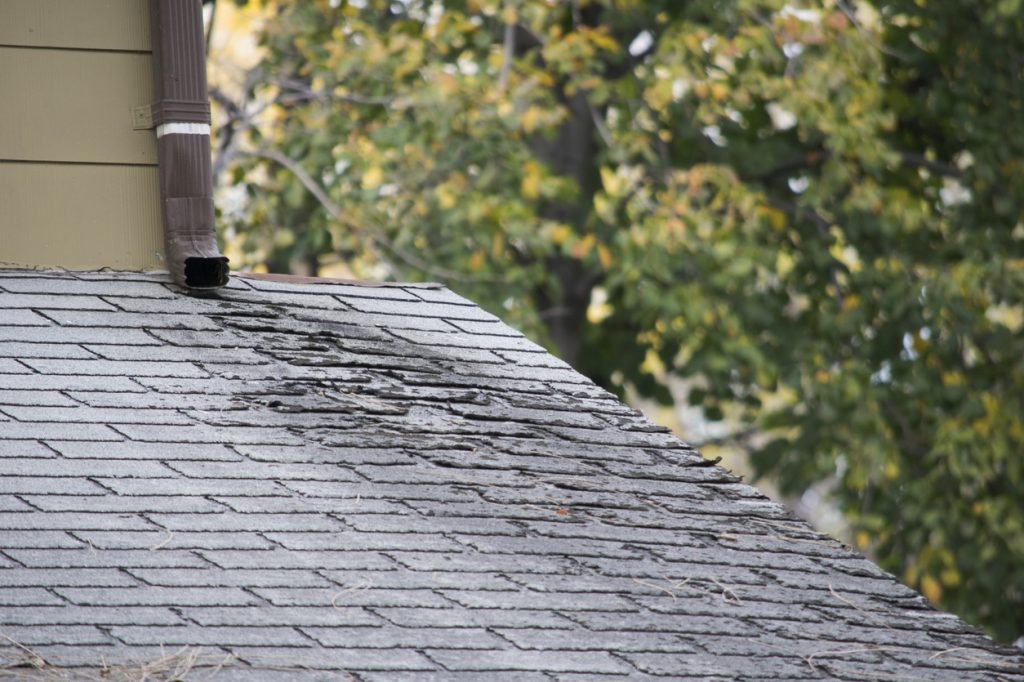
A professional assessment is vital for making this decision. A roofer can evaluate the overall condition of the shingles, the roof deck, and other components to determine if a repair is viable or if replacement is necessary to protect your home adequately. They can also identify if the granule loss is part of a larger issue, such as inadequate ventilation contributing to premature aging.
Preventing Premature Granule Loss
While natural aging is inevitable, certain maintenance practices can help prolong your roof's life and potentially slow down premature granule loss:
- Keep Gutters Clean: Regularly clearing leaves and debris from gutters prevents water backup, which can saturate shingles and the underlying roof deck, contributing to moss growth and granule dislodgement.
- Manage Moss and Algae: Address moss and algae growth promptly, especially prevalent in damp climates like Portland. Use appropriate roof cleaning methods recommended by professionals. Avoid harsh chemicals or pressure washing, as these can strip granules off the shingles.
- Trim Overhanging Branches: Branches rubbing against the roof surface can physically scrape off granules. Keep trees trimmed back away from the roof.
- Ensure Proper Attic Ventilation: Adequate ventilation helps regulate attic temperature and moisture levels. Excessive heat buildup in the attic can cause the roof deck and shingles to overheat, accelerating the drying and degradation of the asphalt binder and leading to premature granule loss.
- Limit Foot Traffic: Only walk on your roof when absolutely necessary, and do so carefully.
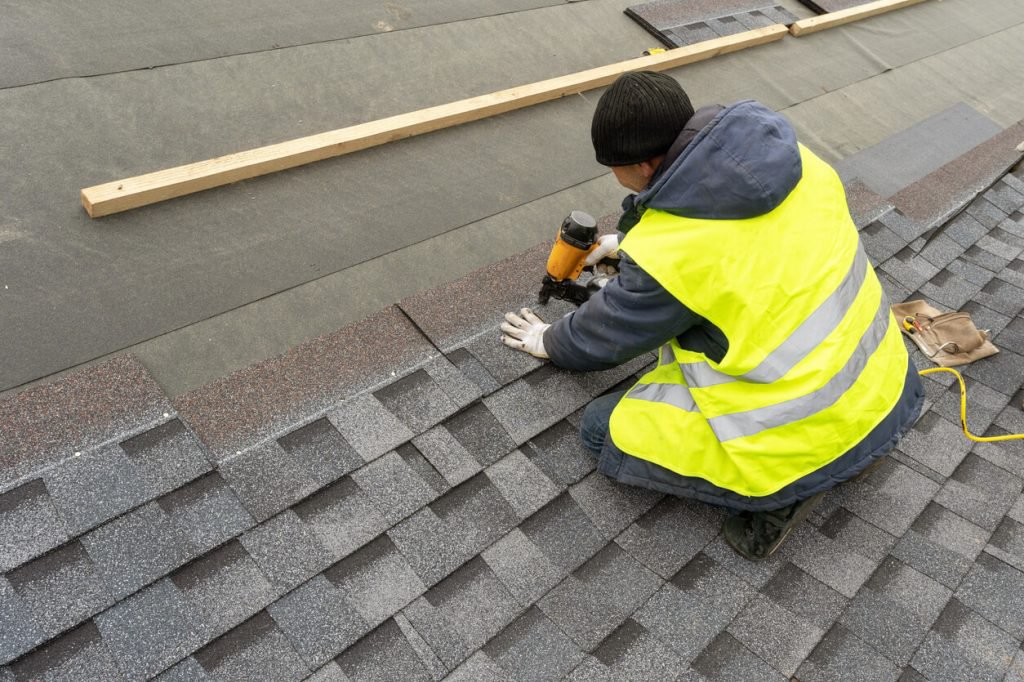
Proper installation and maintenance are key to preventing premature granule loss.
Other Signs Your Roof Needs Attention
Granule loss is just one indicator that your roof may need professional attention. Other signs to watch for include:
- Curling or Cupping Shingles: Edges turning up or down.
- Cracked Shingles: Indicates brittleness and loss of flexibility.
- Missing Shingles: Can lead to immediate leaks and expose the underlayment.
- Water Stains on Ceilings or Walls: A clear sign of a leak somewhere in the roof system.
- Sagging Roof Deck: May indicate structural issues or severe water damage.
- Higher Energy Bills: Poor ventilation or a compromised roof can lead to energy inefficiency.
If you notice any of these signs in addition to granule loss, it reinforces the need for a professional evaluation.
Frequently Asked Questions About Granule Loss
Q: Is some granule loss normal?
A: Yes, a small amount of granule loss, especially in gutters, is normal over the life of an asphalt shingle roof, particularly on newer roofs as excess granules shed. However, significant or sudden loss is not normal.
Q: How can I tell if the granule loss is severe?
A: Severe granule loss is indicated by widespread bare spots on shingles, large accumulations of granules in gutters and downspouts, or if the loss occurs on a relatively young roof.
Q: Can granule loss cause leaks?
A: Yes, significant granule loss exposes the asphalt layer to UV rays and moisture, leading to the deterioration of the shingle and increasing the risk of water penetration and leaks into the roof deck.
Q: Can I repair areas with granule loss?
A: Minor, isolated areas of granule loss might be temporarily repaired, but if the loss is widespread, it indicates the shingles are at the end of their life, and replacement is usually necessary. A professional assessment is needed to determine the best approach.
Q: Does granule loss mean I need a new roof?
A: Not always, but often. If the granule loss is extensive and the roof is older, it's a strong sign that the roof has reached the end of its functional lifespan and requires replacement.
Q: How long do asphalt shingles typically last in Portland, Oregon?
A: The lifespan can vary, but typically ranges from 20 to 25 years with proper installation and maintenance. Factors like climate, sun exposure, ventilation, and shingle quality play a role. The damp climate in Portland can sometimes contribute to issues like moss growth, which can accelerate wear if not managed.
Protecting Your Roof's Vital Layer
Addressing shingle granule loss is an essential part of maintaining a healthy roof and protecting your home. By understanding what granules do, recognizing the signs of their loss, and knowing when to seek professional help, you can prevent minor issues from becoming major problems. Whether you're planning for the future or dealing with an immediate concern, taking proactive steps is the best way to ensure your roof continues to perform its vital function for years to come.
